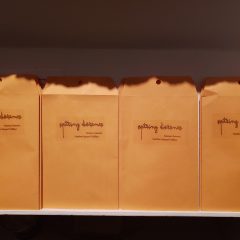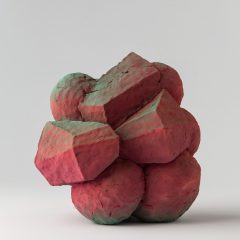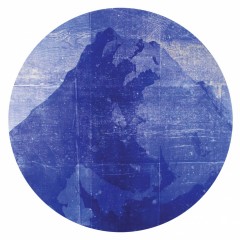Matt Ziemke’s Cadillac Desert at Napoleon (to Nov. 25) examines the relationship between humans and the built environment, with our greener natural counterparts. Unlike many ecologically-motivated artists, Ziemke discusses this built environment/nature juxtaposition — perhaps questions it — but does so exceedingly gently and remains surprisingly and thoughtfully neutral.
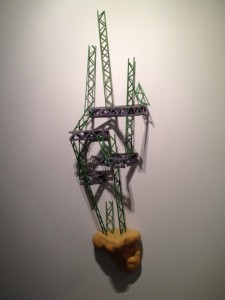
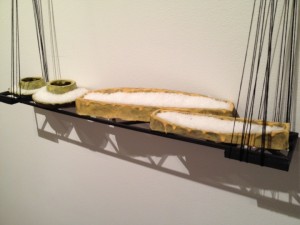
Bodies of water seem to be the focus in the beautifully crafted subtle sculptures, which combine bits of what looks like disassembled geography and delicate sprawling architectural forms. In keeping with the subject matter, the works are made of earthen and manufactured materials.
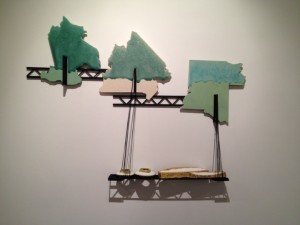
Of the five works that compose “Cadillac Desert,” two specify a particular context. The first is “Conglomerate No. 4: Mapping Salinity.” With its use of natural salt as part of its materials, the piece addresses salt water as a less useful and more plentiful resource.
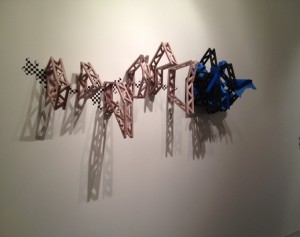
The second work that addresses a definite subject is “Accumulation & Distribution,” a structure of a distinctly mechanical aesthetic. The sharp constructions reaching out from the wall are mirrored in their shadows below, creating a sense of mechanical movement reminiscent of the act of pumping or extracting.
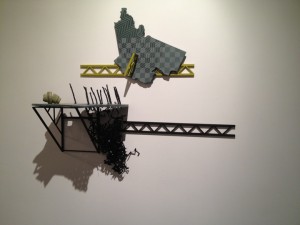
More general than specific in its concept is “Conglomerate No. 3: Field,” an appropriately-titled complex of ceramic, wood, and vinyl. Gridded and patterned cartographic ceramic cut-outs supported by architectural configurations create a miniature fantasyland of zig-zags and misplaced parts. Black vinyl used here evokes flow not unlike oil in water, frozen in time.
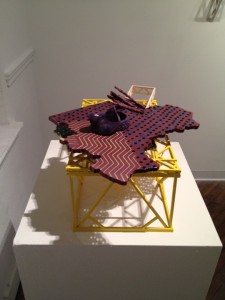
Ziemke’s method of discussing the objects we build and their interaction with waterways and beyond does not force the viewer into any one position, but instead merely highlights the nature of these contrasting entities. His work is contemplative and reflective of humankind and the structures we create to farm and collect the resources our world has to offer. The show questions more than it states in a refreshingly quiet take on an increasingly loud subject.
–Adriana Rabinovitch is a Moore College of Art and Design student in Terri Saulin’s Critical Discourse class.



